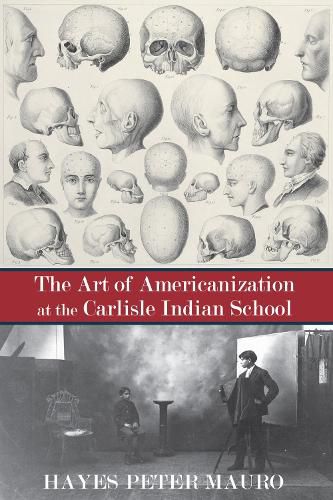Readings Newsletter
Become a Readings Member to make your shopping experience even easier.
Sign in or sign up for free!
You’re not far away from qualifying for FREE standard shipping within Australia
You’ve qualified for FREE standard shipping within Australia
The cart is loading…






Established by an act of Congress in 1879, the Carlisle Indian Industrial School in central Pennsylvania was conceived as a paramilitary residential boarding school that would solve the then-pressing "Indian Question" by forcibly assimilating and Americanizing Native American youth. A major part of this process was the so-called before and after portrait, which displayed the individual in his or her allegedly degenerate state before Americanization, and then again following its conclusion.
In this historical study, Mauro analyzes the visual imagery produced at the Carlisle Indian Industrial School as a specific instance of the aesthetics of Americanization at work. His work combines a consideration of cultural contexts and themes specific to the United States of the time and critical theory to flesh out innovative historical readings of the photographic materials.
$9.00 standard shipping within Australia
FREE standard shipping within Australia for orders over $100.00
Express & International shipping calculated at checkout
Established by an act of Congress in 1879, the Carlisle Indian Industrial School in central Pennsylvania was conceived as a paramilitary residential boarding school that would solve the then-pressing "Indian Question" by forcibly assimilating and Americanizing Native American youth. A major part of this process was the so-called before and after portrait, which displayed the individual in his or her allegedly degenerate state before Americanization, and then again following its conclusion.
In this historical study, Mauro analyzes the visual imagery produced at the Carlisle Indian Industrial School as a specific instance of the aesthetics of Americanization at work. His work combines a consideration of cultural contexts and themes specific to the United States of the time and critical theory to flesh out innovative historical readings of the photographic materials.